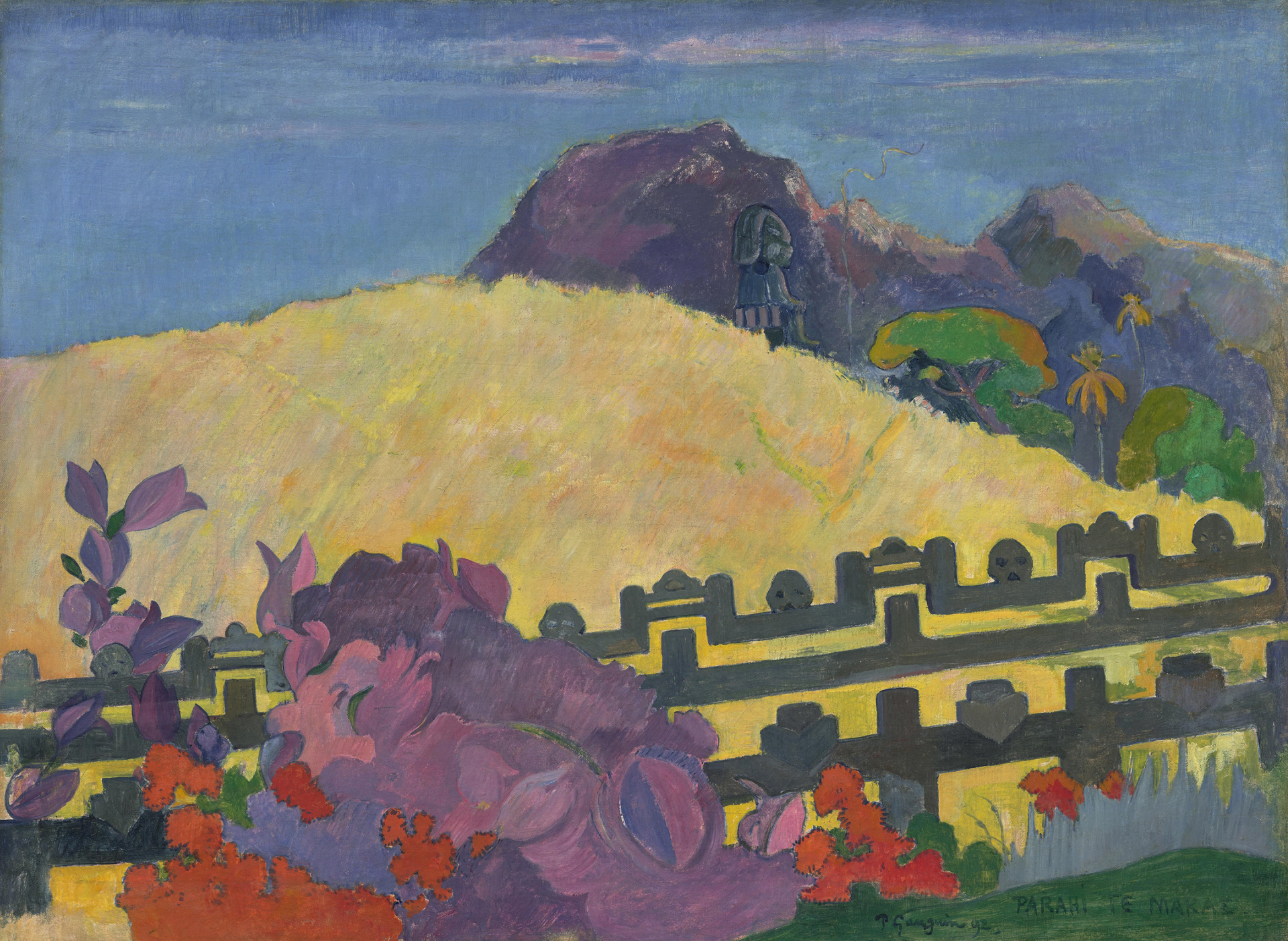Striking swathes of colour characterise Gauguin’s 1892 work Parahi Te Marae (The sacred mountain), painted during the artist’s first trip to Tahiti. His travel was supported by a grant from the French government and the letter of approval from The Ministry of Public Instruction and Fine Arts stated:
… the painter Monsieur Gauguin is charged with a mission to Tahiti to study the customs and landscapes of this country from the point of view of art and the pictures to be painted of it.
In the foreground of this painting, flowers and foliage become an abstract mass of purple, punctuated by irregular shapes of red-orange and pink. This compositional feature is at once imaginative and strategic, echoing the contour and colour of the distant mountains and emphasising the central yellow hill. The geometry of an elaborate carved fence stands in sharp contrast to the landscape, while the profile of a large tiki, or totemic statue, is almost camouflaged against the brooding purple mountains. A thin tendril of smoke beside the statue, adds further intrigue and indicates Gauguin’s inclination towards mystery and mythmaking.
Although the title, Parahi Te Marae suggests an actual Tahitian location, or at least a representative Polynesian religious site, this landscape is a fanciful creation by Gauguin. Marae were usually located in dense jungle, and by the late nineteenth century, many were in ruins following the conversion of Tahitians to Christianity. Gauguin constructed the scene from a range of sources. Looking closely at the objects around him – either in actual or photographic form – Gauguin did not hesitate to reproduce, adapt or combine references for his own creative purposes. The statue included in this painting is often compared to the monolithic mo‘ais of Easter Island, while the ‘skulls’ and fretwork of Gauguin’s fence were inspired by the bone and shell ear ornaments of the Marquesas Islands, one of which is on display nearby.





